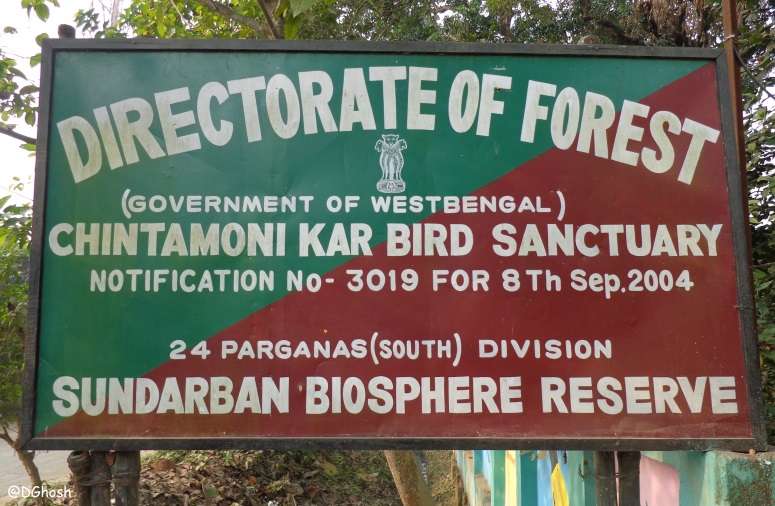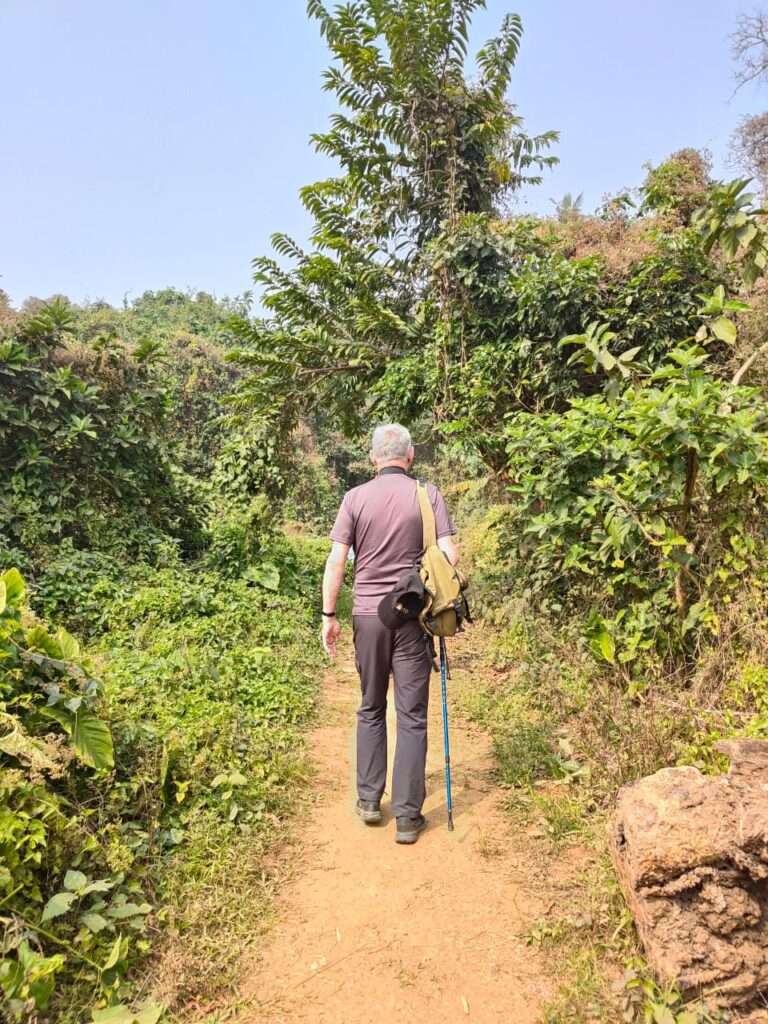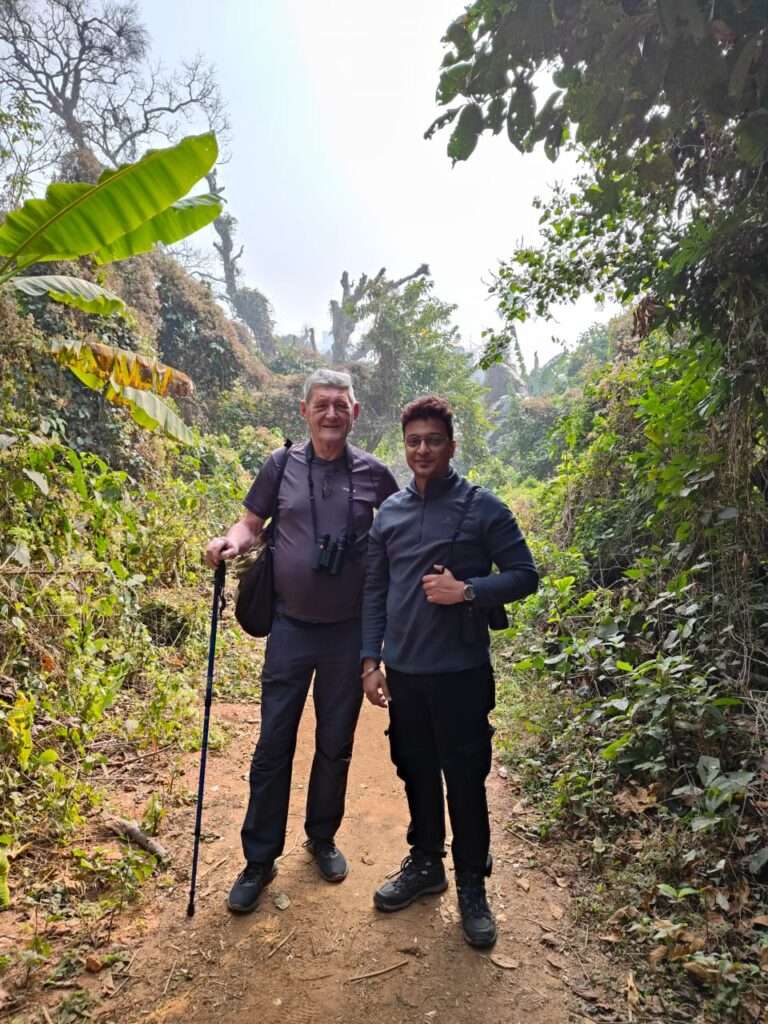Chintamani Kar Bird sanctuary Kolkata For Birdwatching
Known colloquially as ‘Kayaler Bagan’ among the locals, the Chintamani Kar Bird Sanctuary derives its name from the acclaimed sculptor Chintamani Kar. Nestled in the heart of Kolkata, the city of joy, this sanctuary stands as a veritable treasure trove teeming with diverse avifauna, insect fauna, butterflies, insects, land mollusks, reptiles, mammals, and more. Notably, the sanctuary features indigenous medicinal plants, including orchids, ferns, epiphytes, as well as a variety of trees such as mango, jackfruit, coconut, tamarind, guava, dumur, ficus, bamboo yards, safeda, chatun, among others. Remarkably, this lush oasis thrives amidst the urban hustle, serving as a green island that nurtures a remarkably diverse collection of biodiversity.
Situated in the Narendrapur – Rathtala area, the Chintamani Kar Bird Sanctuary sprawls across 17 acres and gained official sanctuary status in 1982. Initially, this expanse was a sprawling abandoned mango orchard enveloped by wasteland and water bodies, featuring ancient mango trees dating back over a century. Originally spanning 27 acres, the government acquisition in 2005 reduced its area to 17 acres.
Formerly a private mango orchard, the Chintamani Kar Bird Sanctuary was transformed by the West Bengal state government, which took over in 2005 with the aim of making it accessible to the public. Originally named Narendrapur Wildlife Sanctuary in 2004, it was later rechristened Chintamani Kar Bird Sanctuary on October 21, 2005, as a tribute to the renowned artist and sculptor Chintamani Kar. This renaming honored Kar’s dedicated efforts, supported by NGOs and locals, to secure the sanctuary’s status as ‘Kayaler Bagan’ or land sanctuary. When venturing into the Chintamani Kar Bird Sanctuary for birding, visitors are treated to a captivating array of bird species, totaling over 150. From common to exotic varieties, the sanctuary boasts inhabitants such as the Asian Koel, rufous woodpecker, shikra, white-throated kingfisher, stork-billed kingfisher, common kingfisher, black kite, spotted dove, emerald dove, rock pigeon, Asian palm swift, common iora, Indian pond heron, sunbird, munia, brown fish owl, ashy wood-swallow, lineated barbet, hawk-cuckoo, orange-breasted green pigeon, green bee-eater, large-tailed nightjar, bulbuls (red-vented and red-whiskered varieties), greater flameback, jungle babbler, and crested serpent eagle. During the peak season, the sanctuary becomes a haven for rare species, including the Blue-throated flycatcher, Tickell’s thrush, scarlet-backed flowerpecker, Eurasian woodcock, Chestnut trained sterling, little spiderhunter, oriental magpie robin, oriental white-eye, lineated barbet, coppersmith barbet, blue-throated barbet, and black hooded oriole.

Chintamani Kar Bird Sanctuary in Kolkata is home to a vibrant array of butterfly species, including the captivating peacock pansies, common leopards, and red jezebels, among others. Beetles can also be spotted amidst the diverse butterfly population.
While the wildlife density may not be high, Chintamani Kar Bird Sanctuary offers glimpses of fascinating creatures such as civet cats, jungle cats, monitor lizards, snakes, mongoose, and jackals. To explore this sanctuary, there is an entry fee of INR 50 per person. The sanctuary follows different timings for winter and summer. During the winter months, it is open from 7:00 AM to 5:00 PM, and in summer, the timings are from 6:00 AM to 5:00 PM. Please note that overnight stays are not permitted.
Best Birdwatching place Chintamoni Kar Bird Sanctuary – CKBS Kolkata / Calcutta
For optimal bird watching at Chintamani Kar Bird Sanctuary, it is recommended to plan your visit during the early morning or evening hours when the birds are more active and visible. As the sun rises, birds seek refuge in the shade of large trees, making it challenging to spot them. Due to the dense forest and the presence of mosquitoes, it is advisable to carry insect or mosquito repellent and cover exposed parts of your body. Binoculars and cameras are essential for photography enthusiasts to capture the diverse bird species.
Avoid visiting the sanctuary during the monsoon months from mid-June to September when heavy rainfall occurs. While reptiles and a few bird species may be observed, the overall sightings may not be as impressive during this period. Maintain the tranquility of the sanctuary by keeping your mobile phones on silent, as loud ringtones or notification tones can disturb the peace and cause fauna to remain in hiding. Refrain from playing musical instruments to avoid further disruption. To preserve the sanctuary’s integrity, refrain from bringing food items inside, but bottled water is allowed. Stick to designated trails, as venturing off may lead to getting lost in the overgrown patches, considered unsafe. When photographing, ensure you capture shots from a distance without disturbing the wildlife habitat. Do not touch nests, sensitive plants, or leaves to minimize disruption to the fauna.
The prime time to visit Chintamani Kar Bird Sanctuary is during the spring and winter months, known as the birding season. March and April are particularly ideal, as many birds, including migratory species like the pheasant-tailed jacana, cotton teal, and gadwall, make the sanctuary their seasonal dwelling place, perching atop trees for better observation.
A haven for nature enthusiasts, bird lovers, and wildlife photographers, this idyllic sanctuary lies in close proximity to the bustling city of Kolkata. Brimming with a diverse array of trees, including enchanting orchids, the landscape creates a paradise on Earth. The sanctuary plays host to a multitude of bird species, with some being permanent residents while others grace the area seasonally. Winter stands out as the optimal time for a visit, offering a captivating experience for birdwatchers, especially during the tranquil early mornings. The sanctuary not only boasts an impressive avian population but also harbors a rich assortment of insects, including various mesmerizing butterflies. In essence, this place is truly a sanctuary, a nature lover’s haven.


Short Briff Of Chintamoni Kar Bird Sanctuary – CKBS
Nestled within a convenient driving distance from the bustling city of Kolkata, the Chintamani Kar Bird Sanctuary stands as a haven for diverse flora and fauna, including butterflies, birds, ferns, epiphytes, and orchids. Located west of the Netaji Subhas Road, connecting Garia with Baruipur in the Rajpur area, this sanctuary is in proximity to the Ramkrishna Mission Institute in Narendrapur. Formerly known as “Kayaler Bagan,” the site gained sanctuary status in 1982 and was officially named the Narendrapur Wildlife Sanctuary on September 8, 2004. However, in 2005, it was rightfully rechristened as the Chintamani Kar Bird Sanctuary in honor of the acclaimed artist Chintamoni Kar, whose significant contributions elevated “Kayaler Bagan” to wildlife sanctuary status.
Sanctuary Hours :–
7:00 am to 4:00 pm
Admission Fees :–
Rs. 50 per head
Attractions at Chintamani Kar Bird Sanctuary :–
The Chintamani Kar Bird Sanctuary is home to a plethora of bird species, including the Common Hawk Cuckoo, Streak-throated Woodpecker, Emerald Dove, Crested Serpent Eagle, White-throated Fantail, and Large-tailed Nightjar, among others. Rare species such as Tickell’s Thrush, Slaty-legged Crake, Scarlet-backed Flowerpecker, Scaly Thrush, Little Spiderhunter, Grey-headed Fish Eagle, and Blue-throated Flycatcher add to the sanctuary’s charm. Additionally, the sanctuary hosts small wildlife like civet cats, jungle cats, jackals, monitor lizards, and more. Originally an abandoned orchard, the sanctuary features coconut palms, jackfruit, guava, tamarind, ficus, and other trees.
Nearby Attractions :–
After a visit to the sanctuary, you can explore kolkata city tour & spend your eveing in ganges river side with boat (optional) or spend your night life in park street.
Activities :-
at Chintamani Kar Bird Sanctuary: The sanctuary offers an excellent opportunity for bird watching and nature walks.
How to Reach :–
Situated in the South 24-Parganas district of West Bengal, the sanctuary is close to the Rathtala Bus stop. The EM Bypass provides the most convenient route, and the sanctuary is approximately 10 km from Ruby General Hospital. Auto-rickshaws and buses are available from Garia, and private buses stopping at Rathtala are also an option.
Best Time to Visit :–
The ideal time to explore the Chintamani Kar Bird Sanctuary is during the period between spring and winter.
Lodging and Dining: While there are no lodging facilities at the sanctuary, it is advisable to bring your own food, making it suitable for day trips.
CONTACT US
